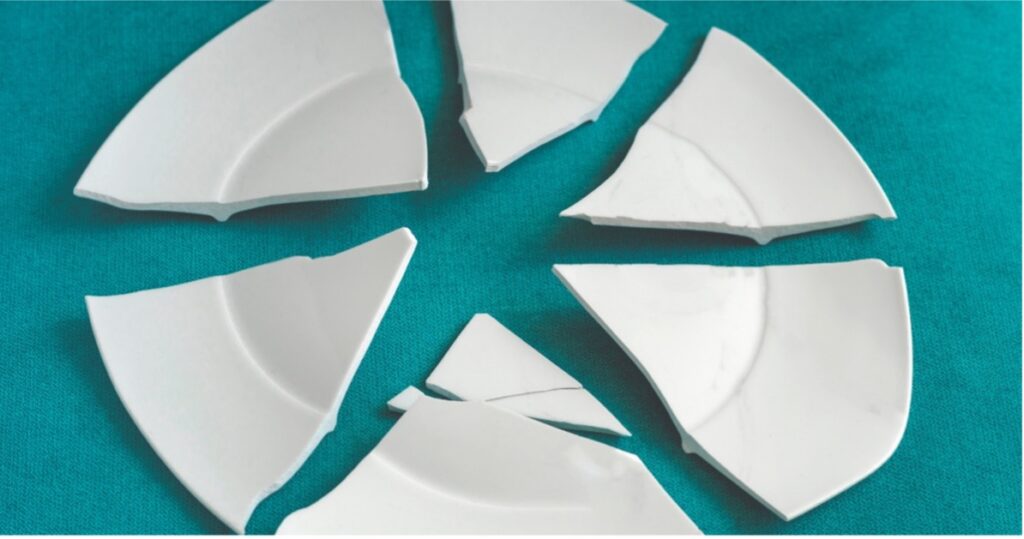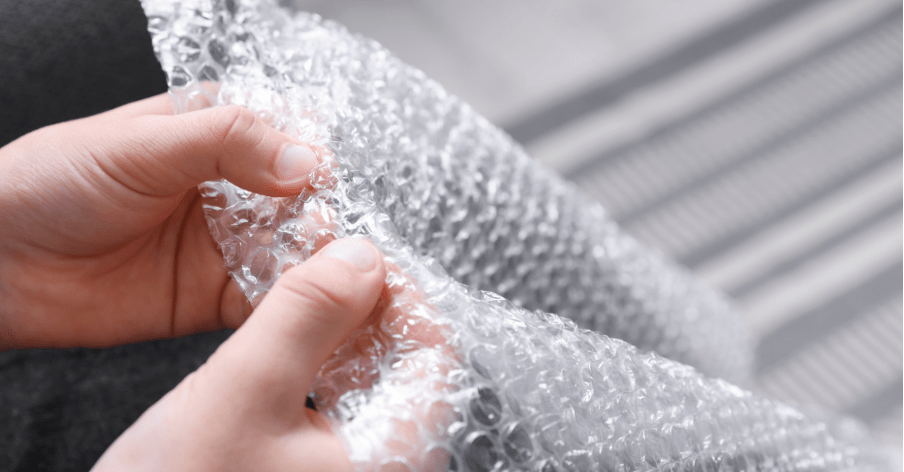When it comes to moving house, packing up your crockery and dishes can be one of the most time consuming tasks. After all, these items are delicate and can easily break if not packed properly.
However, with the right technique and materials, you can pack your crockery safely and securely, ensuring that everything arrives at your new home in one piece.
Choosing the Right Packing Materials
When it comes to packing crockery for moving, choosing the right packing materials is crucial to ensure that your items arrive at your new home safely.
Here are some essential packing materials you will need:
Bubble Wrap
Bubble wrap is a must-have when it comes to your packing plates and crockery for moving. It provides a cushioning layer to protect your items from damage during transit.
You can wrap each item individually in bubble wrap or use it to line the boxes. However make sure to use enough bubble wrap to provide adequate protection.
Packing Paper
Packing paper is another great option for protecting your crockery during a move.
You can use it to wrap individual items or to fill the empty spaces in the boxes to prevent items from shifting during transit and provide additional protection. Packing paper is also an eco-friendly alternative to bubble wrap.
Cardboard Boxes
Choosing the right cardboard boxes is important when packing your dishes and crockery. Make sure to use sturdy boxes that can hold the weight of the items you are packing.
Consider using medium-sized boxes to avoid making them too heavy to lift. You can also use dish-specific boxes that come with cell dividers to keep each item separate and secure.
Packing Tape
Packing tape is essential for securing your boxes and ensuring that they don’t open during transit. Make sure to use high quality packing tape that can withstand the weight of the items you are packing. You can also use “fragile” tape to indicate that the contents of the box are delicate and need to be handled with care.
By using the right packing materials, you can ensure that the boxes arrive safely at your new home. Remember to label each box clearly with its contents and to handle them with care during the move.
Preparation Before Packing
Before you start packing your crockery, there are a few important steps you should take to ensure that your items are properly prepared for the move. This includes cleaning the crockery and organising it.
Cleaning the Crockery
Before packing your crockery, it’s important to make sure that it’s clean. You’ll be thankful for this at the other end, when you are reorganizing your new kitchen units.
To clean your crockery, you should:
- Wash each item thoroughly with warm soapy water
- Dry each item completely with a clean towel
- Inspect each item for any cracks, chips or other damage
- Set aside any items that are damaged or in need of repair
Sorting and Organising
Once your crockery is clean, it’s important to sort and organise it before packing. This will help to ensure that your items are packed in a way that maximises their protection and minimises the risk of damage during the move.
To sort and organise your crockery, you should:
- Make a list of all the crockery that needs to be packed
- Group items that are of similar size and shape together
- Set aside any delicate items that may require extra protection, for example, milk jugs
- Label each box with the contents of it
Packing Techniques
When it comes to packing crockery for moving, there are a few techniques you can use to ensure your items arrive at your new home in one piece.
Here are some tips to help you pack your crockery safely and securely:
Wrapping Individual Pieces
Each piece of crockery should be wrapped individually to prevent damage during transit. Use packing paper or bubble wrap to wrap each item, making sure to cover it completely. Secure the wrapping in place with tape.
For particularly fragile items, you may want to use double layers of wrapping or add extra padding to ensure they are fully protected. Make sure to wrap any handles or other protruding parts carefully to prevent them from breaking off during transit.
Layering in the Box
Once you have wrapped each piece of crockery individually, it’s time to start layering them in the box. Begin by placing a layer of packing material, such as bubble wrap or packing paper, at the bottom of the box.
Next, place the larger and heavier items, such as plates and bowls, at the bottom of the box. Make sure they’re packed tightly together, but leave a little bit of space between each item to prevent them from touching and potentially breaking.
Then, add a layer of packing material on top of the first layer of crockery, and repeat the process with the smaller, lighter items such as glasses, plates and cups. Make sure to pack them tightly together, but again leave a little bit of space between each item to ensure they’re not going to smash.
Repeat these layers until the box is full, making sure to end with a layer of packing material on top to protect the crockery from any pressure or weight from above.
Securing with Tape

Once the box is full, it’s time to secure it with tape. Use strong packing tape to seal the box securely, making sure to reinforce the corners and edges. Label the box clearly with its contents and which way up it should be stored.
If you’re stacking boxes, make sure to place the heavier boxes at the bottom and the lighter ones on top. Avoid stacking boxes too high, as this can increase the risk of them toppling over and breaking.
By using these packing techniques, you can ensure that your crockery arrives at your new home safely and securely, ready to be unpacked and organised in your new home.
Special Considerations for Fragile Items
When it comes to packing fragile items, it’s important to take extra care to ensure they arrive at your new home unharmed.
Here are a few special considerations to keep in mind:
Use the Right Materials
You may want to consider using smaller boxes for heavier or more fragile items, as they are easier to handle and less likely to allow items to shift around inside.
Pack Carefully
Start by wrapping each piece in packing paper or bubble wrap, making sure to cover all sides and corners.
You may also want to consider using dividers or cardboard inserts to keep items separate and prevent them from knocking against each other during transport.
Label Boxes Clearly

To make it easier to unpack your crockery at your new home, be sure to label each box clearly.
This should include a list of the items inside, as well as any special instructions for handling fragile items. You may also want to consider using colour coded labels to help.
Consider Hiring Professionals
If you’re not confident in your ability to pack your crockery safely, or if you simply don’t have the time, consider hiring professional removers to do the job for you.
They have the expertise and experience to pack your crockery, and the rest of your house safely and efficiently, giving you peace of mind during the moving process.
Unpacking Tips
After a long and tiring move, the last thing you want is to unpack your crockery and find it damaged.
To avoid this, follow these simple unpacking tips.
Unpacking Order
It’s important to do this in the right order. Start with the items you use most frequently, such as plates, bowls, and cups. This will ensure that you have everything you need for your first few meals in your new home.
Once you’ve unpacked the essentials, move on to the less frequently used items such as serving dishes and platters. If you have any fragile or delicate items, such as wine glasses, ceramic plates or teacups, save them for last to minimise the risk of damage.
Checking for Damages

Before you start unpacking your crockery, it’s important to check for any damages. Inspect each item carefully for cracks, chips, or any other signs of damage. If you do find any damaged items, set them aside for the bin or charity.
By following these simple packing tips, you can ensure that your crockery arrives at your new home safely and is ready to use when you need it.


